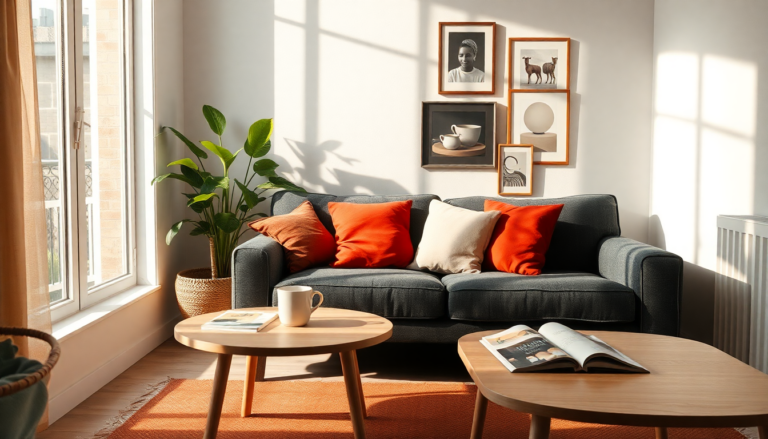Argomenti trattati
As we explore the fascinating world of interior design, it’s intriguing to consider how our first living spaces shape our aesthetic sensibilities. Remember your first apartment? For many of us, it was just a mix of essentials—a haphazard collection of furniture and decor as we tried to define our own styles. But for renowned designers like Nate Berkus, these spaces are more than just a starting point; they’re a canvas that reflects an evolving design philosophy. Recently, Berkus shared nostalgic glimpses of his first apartment in New York’s West Village, a space that still exudes elegance two decades later.
Unearthing Design Foundations
Berkus’s heartfelt Instagram post showcased snapshots from his cozy 550-square-foot apartment, filled with pre-war charm and soaring 10-foot ceilings. He thoughtfully curated his beloved items, demonstrating how a strong focus on personal taste can create a lasting impact. This apartment featured signature elements that define his style today: lacquered navy doors in the office nook, a striking striped carpet in the bedroom, and a mid-century Danish sofa in the living room. Each piece tells a story, reminding us of the importance of choosing items that resonate with us rather than just following the latest trends.
This narrative of space and identity isn’t unique to Berkus. It mirrors a broader trend among designers who recognize that crafting a home starts with these formative spaces. The design choices made in our first apartments often set the stage for future endeavors, creating a blueprint that evolves while remaining rooted in our personal histories. Isn’t it fascinating how our early experiences influence our lasting style?
Emotional Resonance and Timelessness
The response to Berkus’s nostalgic photos highlights the emotional connections people have with their first living spaces. Fans flooded social media with praise for the timeless quality of his design, with comments like, “This just proves your design is so amazingly timeless.” This shows how the aesthetic choices we make in our early years can leave a lasting impression. It’s a testament to the idea that good design truly transcends time, continuing to inspire and resonate with us long after those initial moments.
Moreover, these reflections remind us of the power of nostalgia in design. Berkus has often expressed his love for antiquities, and that passion certainly influenced his choices in that first apartment. The idea that design can evoke memories and emotions is crucial to how we connect with spaces today. This emotional resonance can be a game changer in contemporary design strategies, emphasizing the need for storytelling through our decor.
The Evolution of Personal Style
While Berkus has since moved on to larger, more upscale residences, including a renovated Upper East Side townhouse, his affection for that first apartment is still evident. It reinforces the idea that the essence of our style is often crystallized in those early experiences. For many designers, including Berkus, the journey from a modest apartment to a grand home reflects a continuous evolution of personal taste—one that builds on a solid foundation established in those formative years.
This evolution isn’t just about aesthetics; it’s about understanding the customer journey. As designers and marketers delve into the intricacies of their audience’s experiences, they can uncover valuable insights that inform their strategies. By focusing on the emotional connections and memories tied to our initial spaces, professionals can create designs that resonate more deeply with clients. How can we leverage these insights in our own creative journeys?
Conclusion: Cherishing the Journey
In conclusion, Nate Berkus’s story of his first apartment serves as a powerful reminder of the importance of early design experiences in shaping our lasting aesthetic principles. As we reflect on our own first spaces, we can appreciate how they contribute to our personal narratives and influence our evolving styles. For designers, this tale is not just about nostalgia; it’s about recognizing that every space has the potential to tell a story. By honoring these journeys, we can create designs that are not only visually stunning but also deeply meaningful.

